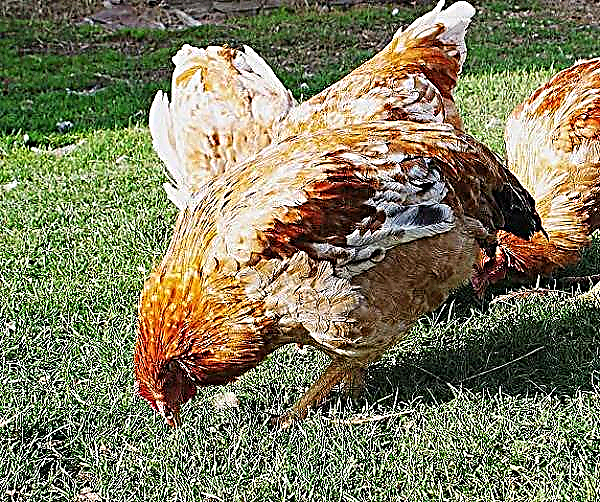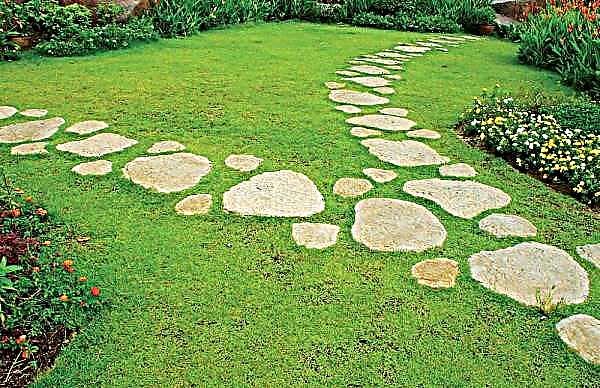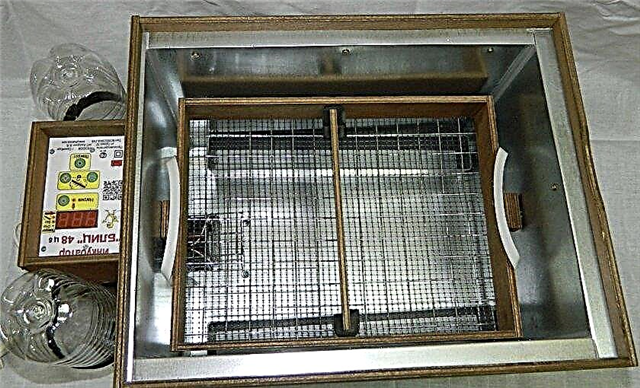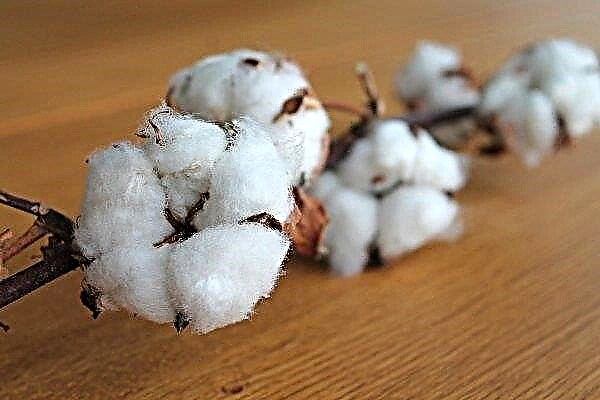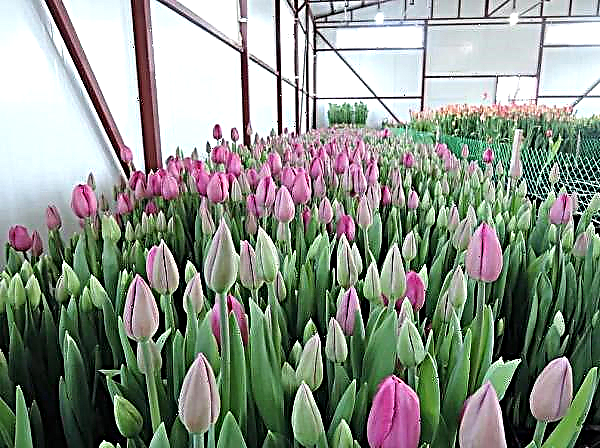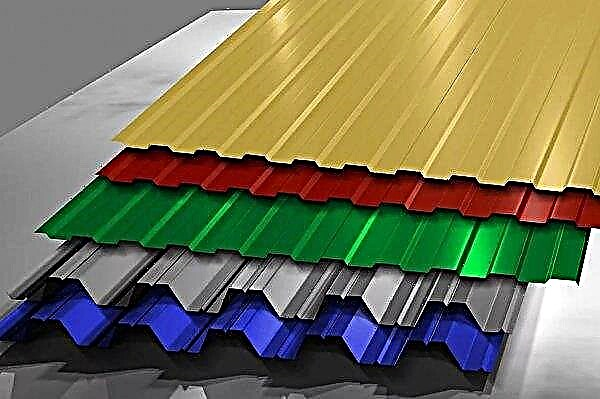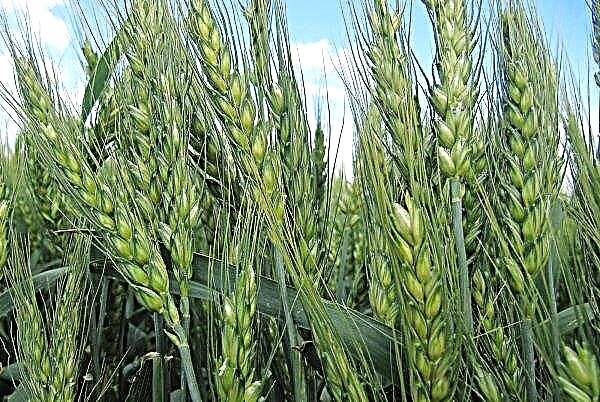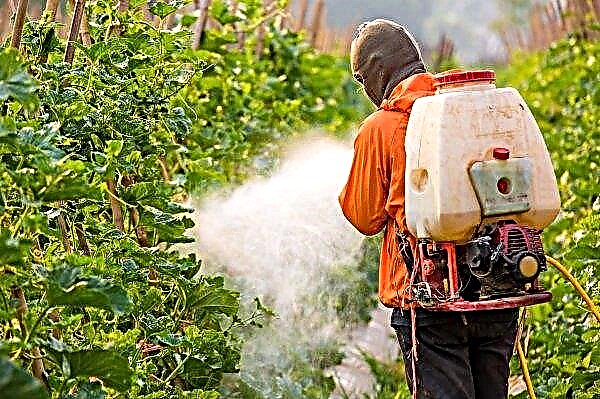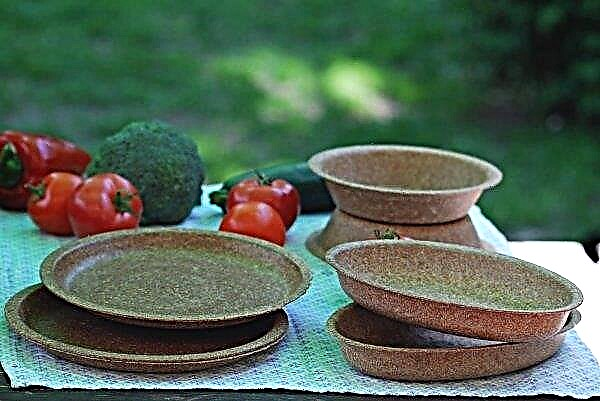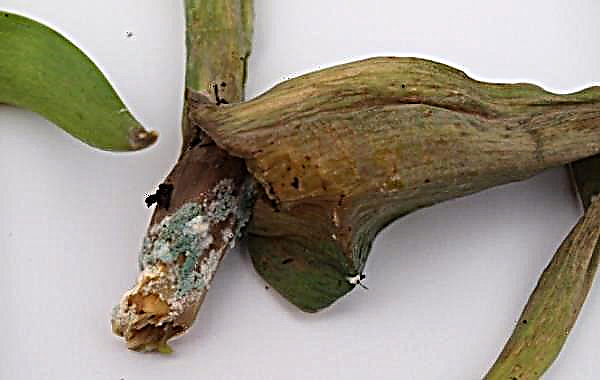Honey mushrooms is a generic name for more than 20 species of mushrooms that belong to different families. The word “honey” has a Latin origin and means “bracelet”. Obviously, these mushrooms got their name due to the fact that they appear in groups that form a circle. According to the second version, their name is associated with the place where they most often grow - on stumps.
Popular edible mushrooms
All edible varieties of honey mushrooms are also called hemp.. Collected in the autumn period, they are especially valuable prey for fans of the “silent hunt”. Mushroom pickers love to follow them into the forest, as they grow in large groups, and you can collect several buckets or baskets at once.
Did you know? In ancient times, people believed in the magical properties of honey agarics: they were sure that on the lawns, where their crops were especially generous, a treasure was buried.
Raw hemp mushrooms are a low-calorie product, but their nutritional value is a worthy substitute for fish and meat, which makes them a real find for vegetarians, people who are fasting or trying to lose weight.
The product is rich in the following vitamins and minerals:

- B vitamins;
- vitamins of group C;
- vitamins of group E;
- vitamins of the PP group;
- cellulose;
- amino acids;
- zinc;
- potassium;
- iron;
- phosphorus.
Thanks to its rich composition, honey mushrooms have a positive effect on the body.. It has been proven that consuming only 100 grams of this product per day stabilizes the hematopoiesis process and normalizes hemoglobin levels in case of anemic disease. The retinol included in the composition has a beneficial effect on the condition of hair, nails, and skin.
At the same time, the presence of vitamins C and E in the composition helps to improve the hormonal background and the functioning of the immune system. Hemp mushrooms will also be useful for people with colibacillus or Staphylococcus aureus. It has been proven that regular use helps prevent diseases of the cardiovascular system and oncology.

Biologists regard these organisms with an unstable composition as very complex. Concerning, it’s hard to determine the characteristics that would be common to all. The appearance of each variety is influenced by the environment, climatic conditions, the type and condition of the surface on which they grow: a young or rotten tree, grass, stump or litter in the forest.
The main sign can be considered the presence of a long leg and a small hat, and all other characteristics depend on each individual type of mushroom. It is important to understand that not all of them are edible, as well as conditionally edible and even deadly poisonous; it is strictly forbidden to eat them.
In order not to be in a hospital bed, before going on a “silent hunt”, you need to carefully study the description and photo in order to clearly understand what edible mushrooms look like and which ones should be avoided.
Ordinary flake
Common flake is the most common representative of this species.. It grows well on wood, both rotten and living, as well as on different parts of deciduous (rarely coniferous) trees. It can be found in Japan, as well as in Europe, North America.
 This mushroom is edible, but mushroom pickers are not very willing to collect it because of the low palatability - the flesh is harsh.
This mushroom is edible, but mushroom pickers are not very willing to collect it because of the low palatability - the flesh is harsh.
In flakes, the hat reaches 6–8 cm in diameter. In young specimens, it is hemispherical; as it grows, it becomes convex, and in old and wilting ones, it is convexly prostrate. Scales - large, protruding, sharp, with a flat edge. Color - brown-ocher or brown-ocher.

The foot reaches from 8 to 20 cm in height, has a cylindrical shape, with a dense texture and a scaly ring. The color is the same as the hat. Spore powder is ocher colored. The texture of the pulp: fleshy, thick, white or yellow, without a tangible smell.
Golden flake (royal honey agaric)
A distinctive feature of golden scales is the fact that they grow alone, colonies - never. The leg is long (up to 15 cm), and the diameter of the cap is up to 20 cm. The wide-bell-shaped form changes over time to flat-round.

The entire surface of the rusty-yellow hat is covered with flaky scales of brown-red color. The mushroom belongs to the category of edible, although it belongs to the 4th category. Royal honey agaric has an unobtrusive, delicate taste, but has no smell.
Important! Royal honey agaric is strictly forbidden to eat raw, it threatens poisoning. Before use, it must be boiled in salted water, and then used for cooking.
Autumn honey agaric
Autumn honey agaric can grow not only in groups, but also singly. It prefers weakened or rotten wood, stumps of oaks, poplars, mulberries, less often you can meet in swamps or coniferous trees.
The hat in diameter can reach 16 cm, the edge is wavy, with a brown stripe. In the process of growth, the bulge gradually disappears. In overripe fruiting bodies, the edges of the cap often bend upward. The leg reaches a height of 8-10 cm, slightly thickens below.
In older specimens, it is stiff, and mushroom pickers, as a rule, do not collect them. The pulp is white, dense, fibrous. The main fruiting period begins at the end of August and, as a rule, lasts three weeks. The rest of the time autumn honeybees can also be found, but only a few instances of generous production should not be expected.
Important! Autumn honey agaric is poisonous in cold salting! It is edible only after thorough heat treatment.
Honey agaric
Summer honey agaric is also called linden or volatile. The hat (up to 8 cm wide) has a characteristic orange-brown color, and in the center there is a watery area. The leg is thin, up to 6 cm tall. Colonies most often appear on weakened damaged aspen, birch, and maple trees.
Creamy brown plates. The pulp is reddish-brown, fragile with a subtle smell of fresh wood. The taste is bitter. Summer mushrooms are suitable for use only after heat treatment. The fruiting period begins in late May - early June and lasts until September.
Honey agaric
The meadow honey agaric grows predominantly along forest clearings, on the edges of the meadows and in the grass. Harvesting occurs in the summer. The hat is small, up to 3 cm in diameter, with a height in the center. Color - orange-beige. The leg is thin, up to 7 cm in height. The records are rare, cream-colored.
Did you know? In Russia, the peel of meadow honey agarics was used to quickly heal shallow wounds and scratches, as well as burns (facilitated burning and pain).
Pulp - with a yellow tint, with a sweetish aftertaste. Grows in groups that form a circle with a bare middle. Mature spores throw very thin and long threads in different directions. Mushrooms form at their ends. Due to lack of nutrients, the grass in the middle of the circle begins to dry, forming a bald spot.
Honey agaric drying out
The drying shank, popularly known as the Oscillating, is characterized by a strong smell and astringent taste. It grows in large groups, parasitizing at the base of deciduous trees, which often causes their death.
Check out

As it grows older, it straightens, and a tubercle forms in the central part. The diameter is from 2.5 to 10 cm.
The surface of the cap is dry, covered with dry dark scales, more noticeable in the initial stages of growth.
The plates are descending, grown, in young mushrooms white, in older adults pink. The spore powder is a light cream color.
The leg is fibrous, smooth, grows up to 20 cm in height, without a ring. The hat has a white color, narrowed downward, with a yellowish tinge. As a rule, drying mushrooms are fused with the lower parts of the legs. If you look closely, on the soil you can see the dark filaments of the mycelium. The fruiting period is from mid-July to the first frosts.
Dark honey agaric
Despite the fact that dark honey agaric (popularly known as spruce, ground or hard spruce) is edible, mushroom pickers very rarely collect them because of their low palatability - the pulp is hard, with a bitter aftertaste. However, if you still intend to eat these mushrooms, they should be subjected to thorough heat treatment.
Dark honey agaric grows in large families, mainly in mixed forests, in rotten wood. The hat reaches a diameter of no more than 10 cm. In young specimens, it is convex, in adults it is flat. Color - yellow-honey, yellow-brown. The center of the cap is more intense.

Flakes are visualized on the surface. The edges are fringed. The foot is disproportionately high - about 12 cm, slightly thickens at the base. There is a white-brown ring. Spores are the color of ocher. The pulp is white, friable, does not have a pronounced aroma.
Honey flyfish
The name of a thick-legged honey fly speaks of the distinctive feature - it has a thicker leg than other representatives of this species. This mushroom is edible, hunted not only by mushroom pickers, but also by industrial enterprises.
Did you know? In the 90s, in an oak forest in Michigan, USA, a mycelium was discovered in the soil with an area of about 15 hectares and weighing up to 10 tons. Numerous studies have shown that the find is over 1500 years old and it is a single organism.
The hat is 3 to 8 cm wide. In young specimens, it has a hemispherical shape with curled edges, but eventually becomes almost flat. Color depends on the place and growth conditions - from white to dark brown. In the initial stages of growth, the entire hat is covered with small scales.
In adult mushrooms, the edges become almost smooth, all the scales are concentrated in the central part. The pulp is white, dense, with a pleasant characteristic mushroom smell. Plates are frequent, slightly descending, depending on the maturity of the fruiting body, their color varies from white to ocher. When the mushroom perespal, brown spots are visible on the plates. The spore sac is white.

The leg is cylindrical, often with a tuberous swelling below, the color is lighter than the cap. The remains of the ring are visualized at the top. The pulp has a rigid, fibrous structure. The fruiting period lasts from the beginning of August (in the hot summer - from mid-July) to October. The usual habitat is rotting trees, coniferous litter.
Did you know? Mushrooms — real parasites. They are able to destroy about 200 species of various trees and shrubs. They provoke the development of white rot on the surface on which they grow, thereby leading to its death.
False honey mushrooms
There is a whole genus of Githolome, which combines all the existing false mushrooms. Their habitat and external characteristics largely coincide with edible ones. But not all of them are edible.
Therefore, it is very important to be able to recognize them:
- Seroplate is a completely safe, and even tasty and healthy product. A distinctive feature of this variety is that it grows only on stumps and rotten wood of conifers (mainly on pines, less often on spruce). This mushroom is very similar to the inedible false-foam sulfur yellow. Therefore, novice mushroom pickers are strongly advised to go on a “quiet hunt” with more experienced comrades, and never take those fruiting bodies that they are not sure about.
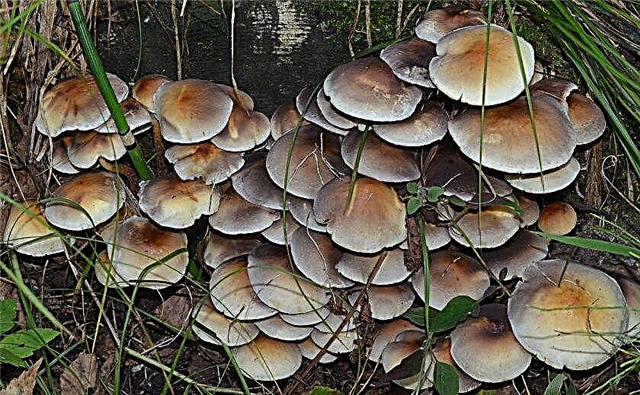
- Sulfur yellow - a poisonous representative of the genus Githolome. It grows on rotten trees and stumps, as well as on soil, which contains the remains of rotten wood. It is not fastidious to the type of surface (a very similar seroplate lamellar grows only on conifers). Fruits in large groups, which attracts inexperienced mushroom pickers. The plates of these mushrooms have a green tint, while those of the seroplate ones are gray.
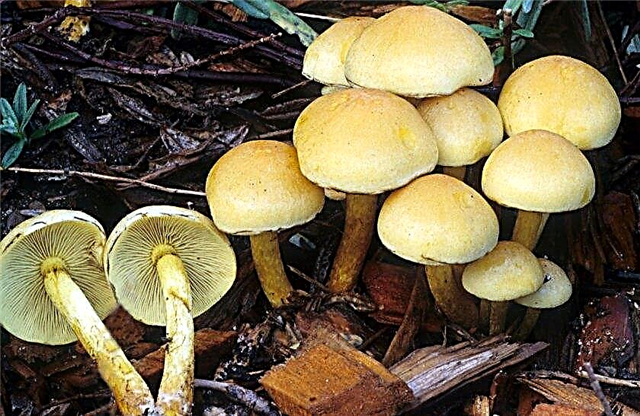
- Brick red. Experts cannot agree on the safety of this species. Some of them are classified as slightly poisonous, others as edible. Fruits well in places with decaying deciduous soil. The hat is bell-shaped, chocolate color. The slice emits an unpleasant odor. May cause some digestive upsets.
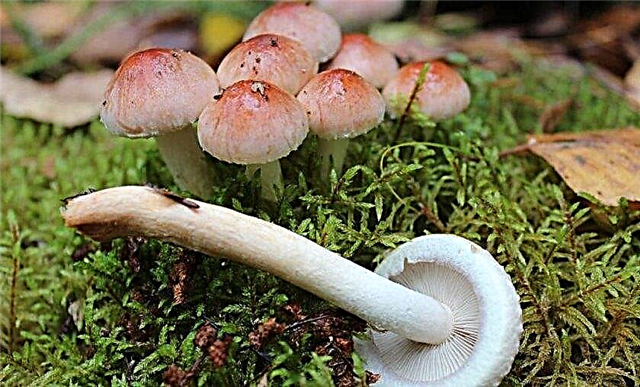
- Galerine fringed - deadly poisonous mushroom. It grows from early June to the first frost. It prefers stumps and rotten wood of conifers, but can also appear on deciduous. Grouped by small families. It is very similar to the summer one, therefore it is extremely important to know their distinctive features, because an error can cost a life. Like the pale toadstool, the galley bordered contains amanitine. Symptoms of poisoning are felt after 7-10 hours after use. Unlike summer, this mushroom does not have scales on the leg.

How to distinguish honey mushrooms from false honey mushrooms
To distinguish edible mushroom from false, you need to know about the distinguishing features of these mushrooms:
- poisonous species have a brighter, eye-catching color;
- mushrooms that cannot be consumed emit a sharp, unpleasant odor at the cut site;
- hats of all but winter ones have scales. In poisonous mushrooms, the surface is usually smooth;
- inedible fruit bodies predominantly lack a skirt;
- in poisonous varieties, the plates have a swamp green, olive black or bright yellow color, in edible ones they are always light (cream, white or yellowish).

Many people find checking mushrooms for their edibility at home informative and reliable. Indeed, milk, vinegar or onions can help to recognize some dangerous enzymes in time, but not all.
The toxicity test using silver can also not be called accurate, since the color change of the metal is nothing more than a chemical reaction with amino acids that are present in all mushrooms.
Important! If the mushrooms after the heat treatment have an unpleasant aftertaste or are bitter, you should never eat them!
Honey mushrooms are a very valuable and tasty gift of the forest. They can benefit not only in cooking, but also help prevent or cure some diseases. But, you should never forget that these wonderful mushrooms have many dangerous doubles! Campaigns on the "silent hunt" should always be treated with special responsibility, since even one bad copy in your basket can bring a lot of trouble.





